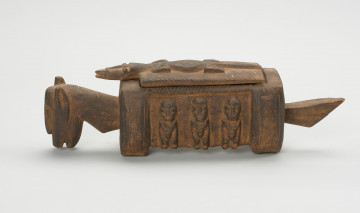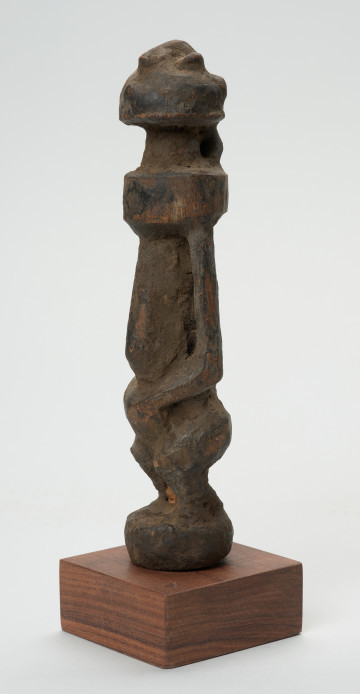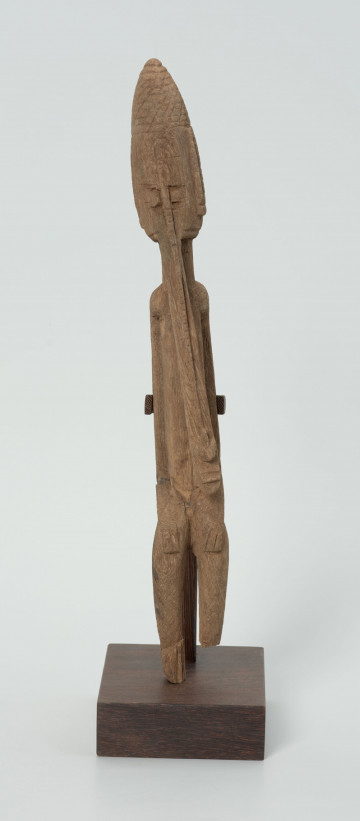
Nommo Ark
między 1951 — 2000
National Museum in Szczecin
Part of the collection: Collection of Dogonian art
Nommo are the most significant deities in Dogon mythology. They participated in the birth of the first humans and contributed to the creation of the world that is the environment of the modern Dogon. At the dawn of the universe the order established by the creator god Amma was disturbed after the scaling of the Earth by Yurugu (Ogo). Amma therefore appointed one of his obedient Nommo Anagonno to repair the damage caused by the rebellious Yurugu. Nommo chosen as O sacrifice was first castrated and then put to death. The castration of the deity gave birth to Sigi Tolo (Sirius A), the star which according to the Dogon is the centre (or navel) of the universe. The death of O Nommo gave rise to the first grains of rice and millet, which germinated in a pool of his blood. Amma carried Nommo's bleeding body to the west, laid it on a blanket and cut open the abdomen to take out the internal organs, including the liver considered to be the base of the heart and the seat of the nyama vital force, which along with blood circulates through the veins. Finally, the Creator dismembered the victim's body and scattered it to the four cardinal points. This gesture cleansed space, the four sides of the world and the Earth. The universe did not return to its previous state, but was renewed and rearranged and became the best place to live. The sacrifice of O Nommo and the division of his body are recalled every year during the Goru harvest festival, when the sacrificed animal is divided in a similar manner as Amma divided the remains of his victim. The rebellion and evil deeds of Yurugu, later cancelled out by the sacrifice of O Nommo, symbolise the complementarity and coexistence of two completely opposite attitudes that together create human reality.
Ewa Prądzyńska
Author / creator
Dimensions
cały obiekt: height: 37 cm, width: 5,5 cm
Object type
figure
Creation time / dating
Creation / finding place
Identification number
Location / status

między 1951 — 2000
National Museum in Szczecin

między 1951 — 2000
National Museum in Szczecin

między 1901 — 1950
National Museum in Szczecin
DISCOVER this TOPIC
Castle Museum in Łańcut
DISCOVER this PATH
Educational path